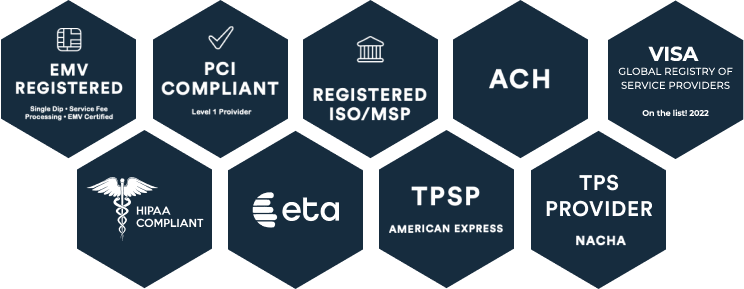While the credit card payment process may seem to take place instantaneously, a lot happens behind the scenes to ensure the payment is accurate and delivered on time.
Discover who is involved in each step of the credit card transaction process and how payment processing works.
Who Participates in Processing Credit Card Payments?
In a credit card transaction, the credit card payment process involves more participants than just the customer and the merchant. There are several key players that operate behind the curtains to facilitate the processing of credit or debit card payments. Below you will find each player and their significant role that ensures a smooth transaction.
- Cardholder—Acquires a credit or debit card from a bank issuer and utilizes it to make purchases.
- Issuing Bank—The issuing bank is the cardholder’s financial institution to pay for a good or service. This can be anything from a local credit union to a large global bank.
- Merchant Bank—A merchant bank is a bank the merchant uses to process the payment.
- Card Associations—These are the companies that issue credit and debit cards. The largest include Visa, Mastercard, Discover, and American Express. These card networks set interchange rates and security guidelines for processing their cards.
- Payment Processor—These firms play a crucial role in handling the transactions. They establish connections with the merchants, merchant banks, issuing banks, and card networks, seamlessly overseeing and coordinating the entire credit card payment process.
How Does Credit Card Processing Work?
All credit card payments work by processing these two steps:
- Authorization
- Settlement and funding
Step 1: Authorization
When the cardholder presents the credit card to the merchant, the card is either swiped, inserted, or tapped against a secure terminal to verify the card and approve the potential transaction. This is called authorization.
During the authorization process, the merchant’s card reader contacts the merchant’s payment processor with a request for payment authorization—the payment processor contacts the appropriate card associations, which connect to the issuing bank. The card information is shared with the issuing bank.
Issuing banks will decline authorization attempts if the information is invalid, expired, or inaccurate. They can also choose to decline authorization if there are signs of fraud, identity theft, or if there are insufficient funds in the cardholder’s account.
If the issuing bank approves the authorization attempt, an approval is sent through the payment processor to the card association, back to the merchant bank, and finally back to the merchant.
The entire authorization process typically only takes a few seconds to complete.
Step 2: Settlement and Funding
Now that the payment has been authorized, the merchant can transfer the funds. This is done through something known as settlement and funding.
After authorization, a merchant will use their payment processor to send a large batch of authorized transactions to a card association. Typically this batch includes every authorized payment from a single business day. Some larger organizations send batches more frequently to reduce batch size and prevent potential delays.
The card associations share the batch information and communicate with the issuing banks, who then charge the cardholder’s account for the appropriate amount. That charge is sent back from the issuing bank to the card association and finally to the merchant bank, where it is deposited into the merchant’s account.
In the past, settlement and funding were manually processed, which meant that it took days to resolve each batch. Now, this is an automated process, so it is usually handled overnight.
Payment Processing FAQs
Here are answers to a few common questions you may have about the payment process when using a credit card.
What Does Processed Pending Payment Mean?
When a payment status appears as “processed pending” or simply “pending,” it signifies that the payment has been authorized but is not yet settled or funded. In simpler terms, the transaction has received the initial approval but is still awaiting completion of the final processing steps.
For instance, imagine you’ve just made an online payment with a credit card. The payment status might appear as pending due to the bank needing additional time to process the transaction or due to additional security verifications.
How Long Does It Take a Credit Card Payment to Process?
It typically takes 1-3 business days to process a credit card. The first step is to get verified which happens almost immediately. The last step is the actual movement of funds from the credit card issuer to the merchant’s account. It is the last step that takes the longest when processing a credit card.
CORE Payment Processing
CORE offers streamlined payment processing. Learn more about our payment processing solutions.




































